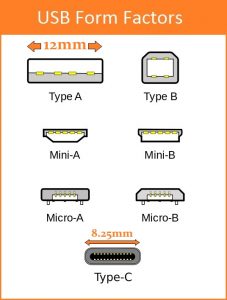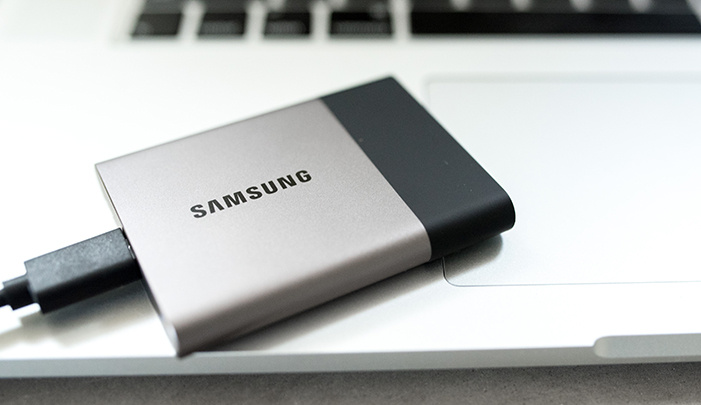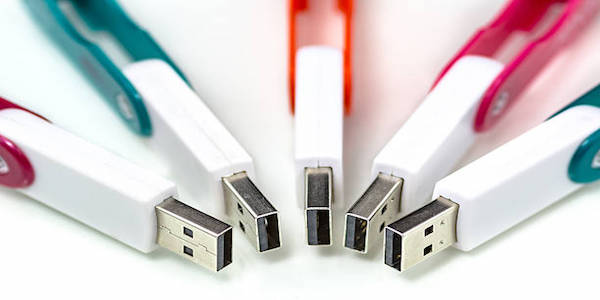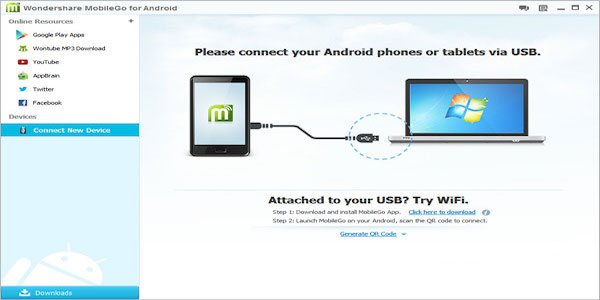USB 3.1 is the most recent version of the USB (Universal Serial Bus) standard for connecting computers and electronic devices. The USB 3.1 specification takes over the existing USB 3.0’s SuperSpeed USB transfer rate, also referred to as USB 3.1 Gen 1, and introduces a faster transfer rate called SuperSpeed USB 10 Gbps, referred to as USB 3.1 Gen 2, putting it on par with a single first-generation Thunderbolt channel. The new mode’s logo features a caption stylized as SUPERSPEED+. The USB 3.1 Gen 2 standard increases the maximum data signaling rate to 10 Gbit/s (1250 MB/s), double that of SuperSpeed USB, and reduces line encoding overhead to just 3% by changing the encoding scheme to 128b/132b. The first USB 3.1 Gen 2 implementation demonstrated real-world transfer speeds of 7.2 Gbit/s.
The USB 3.1 standard is backward compatible with USB 3.0 and USB 2.0. It defines the following transfer modes:
USB 3.1 Gen 1 – SuperSpeed, 5 Gbit/s (625 MB/s) data signaling rate over 1 lane using 8b/10b encoding, the same as USB 3.0.
USB 3.1 Gen 2 – SuperSpeed+, new 10 Gbit/s (1250 MB/s) data rate over 1 lane using 128b/132b encoding.
For users of USB 3.1 (SuperSpeed USB), the goal of connecting devices to PCs or notebooks is the same as the USB 2.0 specification (Hi-Speed USB).
How is the USB 3.1 better than other USB ports?
USB 3.1 devices and computers are able to use both of the current plugs: Type-A, The most common and familiar USB connector shape is USB Type-A, which is currently used on the vast majority of computer equipment and peripherals, as well as other devices, including those that utilize its Mini-A and Micro-A variants (see image to the right). Gaining popularity in the mid 90’s, standard USB Type-A connectors are rectangular and have a distinct top and bottom, requiring them to be oriented properly in order to be plugged in, a much-maligned design flaw characteristic. Type-B, the square-shaped plug that’s mostly used for printers, external hard drives. Smaller plugs like Mini USB and Micro USB may not be compatible, so sometimes the expanded USB Micro Type-B is used, as on phones like the Samsung Galaxy S7. This allows for the faster data transfer rate in the USB 3.0 spec, but still lets you use older MicroUSB cables for standard charging and data transfer.

The biggest improvement for the USB 3.1 standard is a boost in data transfer bandwidth of up to 10 gigabits per second. The new SuperSpeed USB specification in Generation 2 of USB 3.1 delivers improved data encoding and efficiency, doubling the speed of the Generation 1 standard (5Gbps). To put it into more practical terms, the contents a fully-loaded 50 gigabyte Blu-Ray disc could be transferred over USB 3.1 Generation 2 in just 38 seconds.
Also, Generation 2 is so new that there are very few devices currently supporting it. The slightly older standard, USB 3.1 Generation 1 only supports speeds of up to 5 gigbits per second, which is the same speed as USB 3.0. USB 3.0 and USB 3.1 Gen 1 are very similar, in fact; the latter is mostly notable thanks to the few Type-C devices that support it as well.
Essentially the maximum raw speed is different:
USB 3.1 gen 2 is up to 10Gb/sec
USB 3.1 gen 1 (aka USB 3.0) is up to 5Gb/sec
USB 2.0 is up to 480Mb/sec
There are not many USB 3.1 gen 2 devices around yet, but there are bound to be more in the future so buying USB 3.1 gen 2 on a PC will help future proof it. For an example of real world speeds with current devices:
Samsung’s T3 SSD uses USB 3.1 gen 1(USB 3.0) and achieves up to 480MB/sec read speeds
Sandisk’s Extreme 900 SSD series uses USB 3.1 gen 2 and achieves up to 850MB/sec read speeds
When buying though note that the new USB type C port doesn’t necessarily support USB 3.1 gen 2. For example the Samsung T3 has USB type C but only supports USB 3.1 gen 1, and many android phones with USB type C only support USB 2.0.
Conversely just because a PC has the traditional USB type A socket doesn’t mean it can’t support USB 3.1 gen 2. In fact some manufacturers use a light blue for a USB type A socket supporting USB 3.1 gen 2, compared to dark blue for USB gen 1.
So check the tech specs!




I love the SSD. it’s so fast
If you are use to Read speeds Up To 245MB/s; and Write speeds Up To 190MB/s then this product is not for you.
I am spoiled by the “SanDisk Extreme CZ80” line